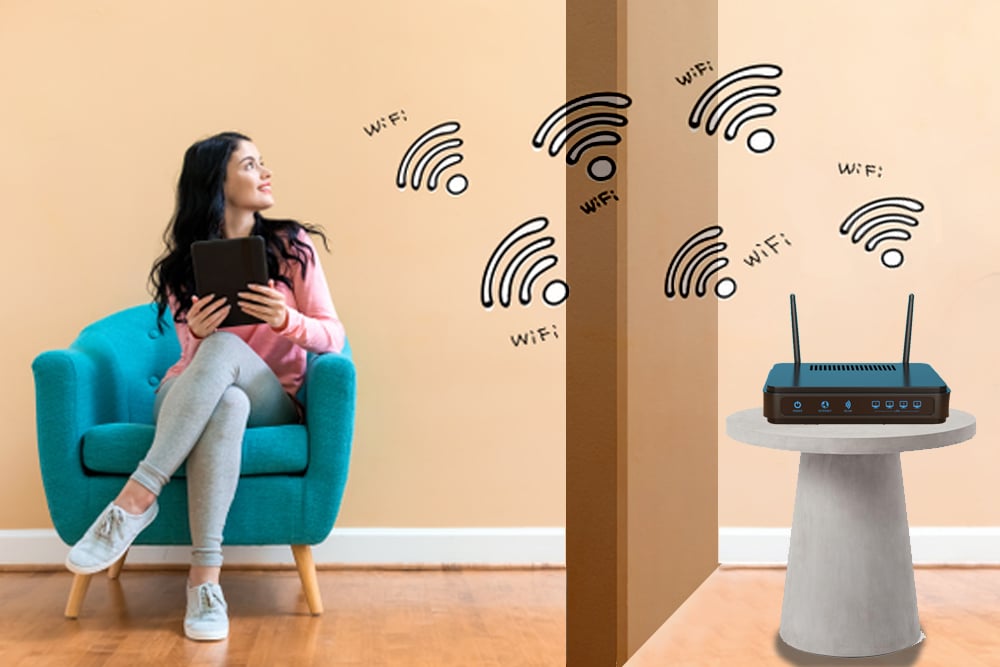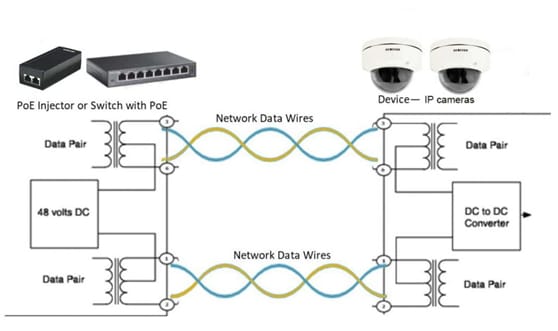Does Wi-Fi Go Through Walls?
Wi-Fi is a type of wireless technology that allows devices to connect to the internet without the use of cables. An important question many people ask is whether Wi-Fi signals can go through walls. The answer to this question is yes, but with some limitations. Wi-Fi signals can penetrate walls but their strength is significantly reduced when doing so. The thickness and material of the walls can also affect the strength of the signal. Additionally, other objects such as furniture, electrical appliances, and even people can impede the passage of the signal. Therefore, while Wi-Fi signals can go through walls, the strength of the signal will be reduced and the signal may not be able to reach its intended destination.
What is Wi-Fi?
Wi-Fi is a wireless technology that enables devices such as computers, smartphones, and other connected devices to communicate with each other and access the internet. Wi-Fi works by using radio waves that are transmitted from an access point, such as a router, to a device. These radio waves travel through the air and are able to pass through walls and other objects in order to get to the device. This makes it possible for devices to stay connected to the internet even when they are not in direct line of sight with the router.
How Does Wi-Fi Work?
Wi-Fi is a wireless technology that uses radio waves to connect devices to the internet. It is a convenient way to access the internet without the need for hard-wired connections, such as Ethernet cables. However, many people wonder how Wi-Fi works and if it can really go through walls. To answer this, it is important to understand the basics of how Wi-Fi works.
Wi-Fi works by sending data back and forth between two devices. One device acts as a transmitter, sending out signals that are picked up by the other device, which acts as a receiver. The data is transmitted in the form of radio waves, which are electromagnetic energy waves that can travel through walls and other objects. The distance that a Wi-Fi signal can travel depends on the type of signal, the strength of the transmitter, and the type of material the radio waves are passing through. In general, Wi-Fi signals are able to travel through most walls and other obstacles, but the strength of the signal decreases as it moves farther away from the transmitter.
In addition to understanding how Wi-Fi works, it is also important to understand how to optimize the signal for the best performance. This includes positioning the router in an open space, away from walls and other objects that might obstruct the signal. Additionally, it is important to use the latest Wi-Fi technology, such as the 802.11n standard, which offers faster speeds and a longer range. By understanding the basics of Wi-Fi and how to get the most out of it, you can ensure that your internet connection is reliable and fast.
Factors That Impact Wi-Fi Signals
Wi-Fi signals are affected by a range of factors, from the type of router to the materials of the walls. The strength of the signal can vary depending on the distance from the router, as well as the presence of any obstructions. Understanding how these factors play a role in Wi-Fi reception can help you troubleshoot any issues you might be having with your connection.
The type of router is the first factor to consider when it comes to Wi-Fi signals. Routers with a higher frequency, such as 5GHz, are better at penetrating walls, while 2.4GHz routers have a more limited range. The number of antennas on your router is also important, as the more antennas your router has, the better the signal will be.
The materials of the walls can also affect the strength of the Wi-Fi signal. Thick walls, such as those made from brick, can impede the signal, while walls made from drywall are more likely to let the signal through. Metal objects, such as filing cabinets, can also interfere with a Wi-Fi signal.
Finally, the distance between the router and the device can play a role in the strength of the signal. The further away the device is from the router, the weaker the signal will be. To increase the signal strength, you can relocate the router to a more central area in your home and use range extenders to boost the signal throughout the rooms.
Overall, there are many factors that can affect the strength of a Wi-Fi signal, from the type of router to the materials of the walls. By understanding how these factors play a role in Wi-Fi reception, you can ensure that your connection is strong and reliable.

Does Wi-Fi Go Through Walls?
When it comes to wireless internet, the most common question we hear is: Does Wi-Fi go through walls? The answer to this question is both yes and no. The reality is that Wi-Fi is a radio signal, which has the ability to pass through walls and other obstacles, but the strength of the signal will diminish with the thickness and material of the walls.
The amount of signal loss that occurs when passing through walls depends on the type of material the wall is made of. Solid walls, such as brick and concrete, will typically cause more signal loss than walls made of wood or drywall. In addition, thicker walls will cause more signal loss than thinner walls.
Fortunately, there are several ways to strengthen your Wi-Fi signal and reduce the amount of signal loss when passing through walls. For example, placing a Wi-Fi router in a central location can help to ensure that the signal is spread evenly throughout your home. In addition, installing a Wi-Fi extender or repeater can help to extend your Wi-Fi signal and improve its reach.
In conclusion, Wi-Fi does have the ability to go through walls, although the signal strength will be diminished depending on the type and thickness of the walls. However, there are several ways to improve your Wi-Fi signal and make sure that you have a strong connection in every corner of your home.
Wi-Fi Extenders and Mesh Networks
In today’s digital age, wireless networks have become a necessity for many households and businesses. But, one common issue with wireless networks is their limited range, especially when trying to cover large areas. So, if you’re wondering if Wi-Fi can go through walls, the answer is – it depends. While walls can reduce Wi-Fi signal strength, it doesn’t necessarily mean that Wi-Fi can’t go through them at all. To get a stronger signal, homeowners can use Wi-Fi extenders or mesh networks to extend the range of their wireless networks.
Wi-Fi extenders are devices that are designed to expand the range of your wireless network. They act as a bridge between your router and any other devices that are further away from your router. This allows you to get a stronger signal in areas that are outside of your router’s range.
Mesh networks are another option for extending your Wi-Fi range. Mesh networks are networks of multiple access points that are placed throughout your home or office. They work together to create a single, seamless network. This is a great option for those who need to cover larger areas with their Wi-Fi. Mesh networks are also designed to be easy to set up and configure.
Overall, if you’re trying to extend the range of your wireless network, Wi-Fi extenders and mesh networks are two great solutions. They can help you get a stronger signal in areas that are outside of your router’s range, and they are relatively easy to set up and configure.
Alternatives to Wi-Fi
If you’re looking for an alternative to Wi-Fi to get around the issue of building materials blocking the signal, then you should consider a wired connection, a mesh network, or a fixed wireless system. A wired connection, like Ethernet, is the most reliable and secure way to get a strong and fast connection, but it requires the installation of cable throughout the building. Mesh networks require the installation of several routers throughout the building, with each router creating a secure connection with the other routers. Fixed wireless systems are similar to mesh networks, but they use a radio frequency signal to communicate instead of a wired connection. The main advantage of a fixed wireless system is that it can be set up in a fraction of the time of a wired system, and it can also be used to connect multiple buildings.
FAQs About the Does Wi-Fi Go Through Walls?
1. Will I need to install additional equipment for Wi-Fi to go through walls?
Answer: No, most Wi-Fi routers are designed to transmit signals through walls and other obstacles.
2. How many walls can Wi-Fi pass through?
Answer: This depends on the type of router you have, the type of walls, and the distance between the router and the device you are connecting to. Generally, Wi-Fi signals can pass through 2-3 walls.
3. Does the thickness of the wall affect Wi-Fi signal strength?
Answer: Yes, thicker walls can reduce the signal strength of the Wi-Fi signal, so it is important to consider the type of wall when installing a Wi-Fi router.
Conclusion
In conclusion, Wi-Fi does not go through walls, but it can travel through some materials such as glass and certain types of plastic. However, the signal strength will be greatly reduced if it passes through a wall, and the thicker the wall, the weaker the signal will be. Therefore, it is important to set up your Wi-Fi access point in an open area to ensure a strong signal throughout your home.

